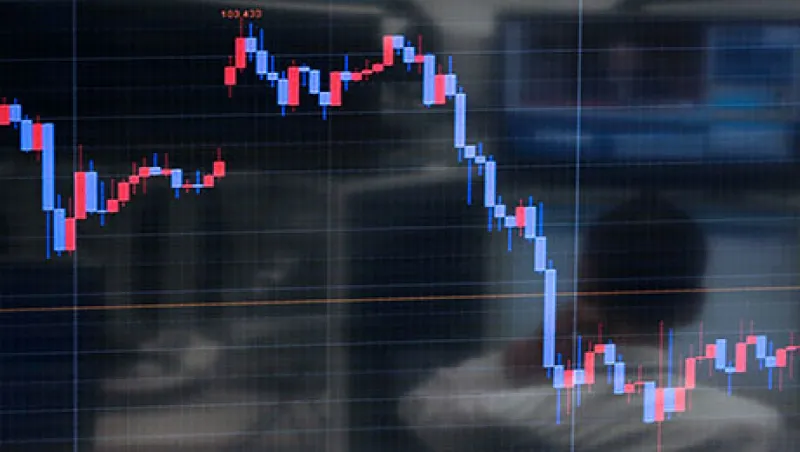Two financial economists walk into a bar... one of those low hanging metal bars at the front of lecture halls that hold up audio video equipment. Rubbing his head, the first financial economist announces to the capacity crowd of financial economists: “My model officially predicts the market!” The room goes wild, erupting in rapturous applause. He raises his fists in triumph, grinning from ear to ear. The second financial economist waits for the crowd to quiet down and, with a smirk, announces: “My model doesn’t just predict the market... it MAKES the market!” The room is silent just long enough for the hanging words to register. Then... pandemonium. The second economist is hoisted onto shoulders and carried victoriously around the room. All agree, that’s the stuff Nobel Prizes are made of...
It may seem odd that we would reward scientists with Nobel Prizes for bending the market to their models. But we do, however unintentionally. Great financial economists do not merely observe and then model financial markets; in some cases, they may in fact influence the way markets function and behave, and, in a sense, their theories eventually become self-fulfilling. Typically, models begin with a theoretical premise that would, ostensibly, continue to exist even if the model did not. But then, brilliant financial economists inevitably affect the markets they are studying; they write papers, give lectures, blog, talk on TV, etc., with the specific idea of sharing their insights with the very people who then use those insights in the market.
As a result, some economic models become more precise over time, simply because the masses start to view them as reliable models of economic systems and leverage that knowledge. For example, Millo and Mackenzie show how one of the mainstays of modern finance, the Black Scholes model, changed the very market it was meant to be describing and as a result became more precise.
In this regard, economists are nothing like astronomers, gazing up and trying to model a starry sky, as the starry sky couldn’t be any more indifferent to the work of the astronomers. It seems highly improbable that an astrophysics model would ever change the nature of the cosmos. Conversely, it is entirely reasonable that financial models and theories would shape the very markets they are meant to explain. Moreover, because financial models are often simplistic representations of the market, the margin for models to effect change in the real world is actually quite great.
Everyone would likely agree that the models of the behavior of financial markets — CAPM, MPT, EMH, MVO, VAR, B-SM, among others — are elegant abstractions of a highly complex system. We justify our use of these models and their assumptions, such as efficient markets or rational actors, not because it makes intuitive sense to do so but because they simplify a world that is too complex to comprehend. In the same way that many religions helped people for millennia understand our origins and our place in the universe and simplify the unknown, the “efficient market” and the “rational actor” assumptions help us to explain things in a manner that is both useful and often efficient.
And because financial theory, like religion, is far more than an explanation about the world — it’s also a toolkit for operating in this world (e.g., The Ten Commandments) — the financial models that emerge as “true” have profound impacts on all of us. And that can be a good or bad thing depending on the people wielding the models. For the sophisticated, who understand the assumptions and their limitations, economic theories can be profoundly helpful. Others who rely blindly on financial theory without appreciating its problems may be heading down the wrong path.
This is thus a topic of importance to the Giants, as their world is truly shaped by the financial models listed above. In fact, they often bend their own behaviors to the demands of these models in the hope of gaining some insight into the markets that these models helped to create. And yet, these models remain fundamentally flawed and in periods of rare crisis can become quite unreliable. Pablo Fernandez recently published a paper entitled, “CAPM: an absurd model”, in which he argues: “It is clear that both the assumptions and the predictions/conclusions of the CAPM have no basis in the real world.” Here’s Michel Callon’s take on financial models: “The mathematical models prized by orthodox financial economists are unjustifiable idealizations of the imperfect psychological and institutional realities of markets... Those whose trading activities rely too much on these models will be punished for their naïveté and hubris by practical failure.”
But what would we do without the traditional theories and models of economics and finance? Would we lose order and discipline in a world that often lacks both? What would we do without religion? Would we lose ethics and morality? I suspect we’d be fine, but I admit to not having a good answer for the question.
My views on the matter align more with this perspective: “Hokey religions and ancient weapons are no match for a good blaster at your side, kid.” I invoke the great Han Solo to suggest that we keep our focus on what’s real and practical. We should use the tools we have at hand to understand the world around us. It’s OK for Giants to use the traditional models of finance so long as they understand and recognize the fragility of a system partially built on a modeled reality. They should supplement these abstract tools with others, such as investment beliefs, agent based models, etc. It’s important to remain skeptical and keep grounded in the real economy. But it’s also important to remind yourself that even if these models are based on flawed logic, the markets often reflect that logic. As John Maynard Keynes correctly observed, “Markets can remain irrational longer than you can remain solvent.”






